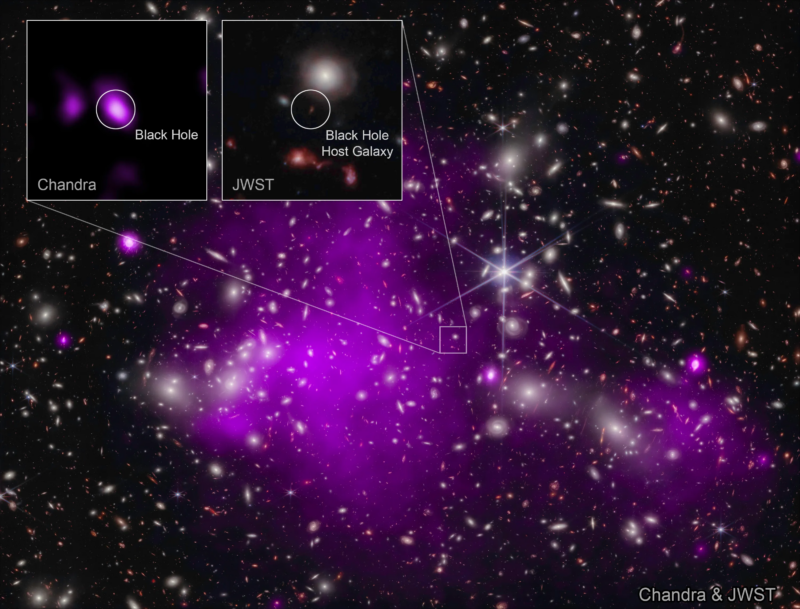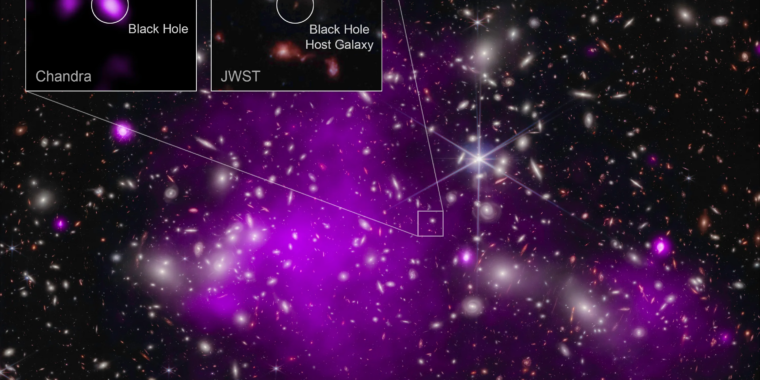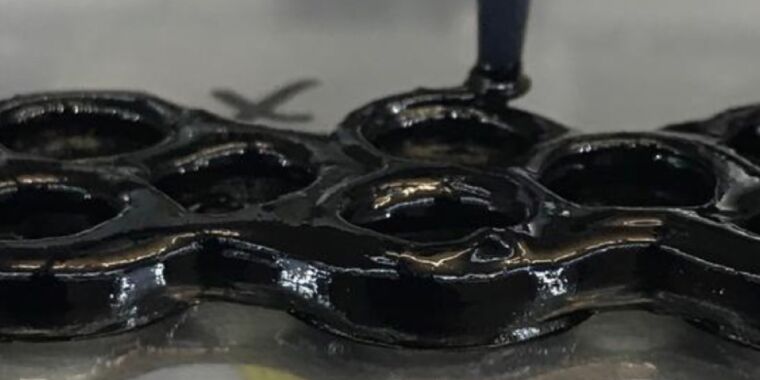
Researchers combing through some of the earliest galaxies in the Universe have found one that appears to have an actively feeding central black hole. Based on the amount of radiation it’s emitting, the researchers estimate that it accounts for roughly half of the mass of the entire galaxy it’s in—an astonishingly high fraction compared to modern galaxies.
The fact that such a large object can exist only half a billion years after the Big Bang places severe limits on how it could possibly have formed, strongly suggesting that supermassive black holes formed without ever having gone through an intermediate step involving a star.
Old X-rays
The earliest galaxies in the Universe that we know about have been identified using the James Webb Space Telescope, which took advantage of a galaxy cluster in the foreground that magnified more distant ones through gravitational lensing. Using the lens provided by a specific cluster, the Webb identified 11 galaxies that were imaged as they existed less than a billion years after the Big Bang.
An international team of astronomers decided to check these galaxies for the presence of the supermassive black holes that sit at the center of modern galaxies. When these feed, they emit copious amounts of X-rays, so the researchers turned to the Chandra X-ray Observatory, using it to image the lensed region, and comparing the position of sources to those of the galaxies identified by Webb. To gather enough data, the Chandra spent up to two weeks imaging a single location.
There was one clear match with a galaxy named UHZ1, which is magnified nearly fourfold by the gravitational lens. The X-rays from this location stood out above the background by four standard deviations. (There may be information on X-rays associated with the other 10 galaxies, but the researchers say they’ll publish that separately.) UHZ1 is at a redshift of z=10, which means we’re looking at it as it existed about 500 million years after the Big Bang.
The amount of energy coming from this X-ray source is consistent with an active galactic nucleus, objects that are powered by a supermassive black hole sitting at the center of the galaxy. Based on the detected wavelengths, the researchers think that the object is in a shroud of dust and gas within its host galaxy.
How fast does a black hole eat?
To understand these results, you have to understand the Eddington Limit, which determines how quickly a black hole can incorporate material from its surroundings. Named after Arthur Eddington, who performed the first calculations on it, the limit is set by the fact that matter has to lose energy to fall into the black hole—otherwise, it would simply remain in orbit around it. That energy will be lost in the form of radiation, which will be absorbed by matter nearby and drive it further away from the black hole.
As a result, even if there’s lots of material available for a black hole to feed on, its diet ends up limited: Feed on too much, and the radiation chokes off the food supply. So, given the mass of the black hole, the Eddington Limit can be calculated as the maximum amount of material it can ingest in a given time.
There are ways to exceed the Eddington Limit if material is channeled toward the black hole. But these require very specific configurations of gas that feed material directly down the gravity well, and so super-Eddington feeding is thought to be a temporary aberration.








